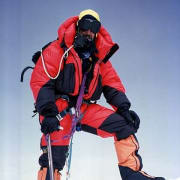Historic Mount Fuji Remains Snowless on Its Iconic and Symbolic Summit

Iconic Mount Fuji
Mount Fuji, Japan's highest and most iconic peak stands 12,389 feet. Climbing the statuesque mountain presents a unique adventure blending a physical challenge with stunning beauty and cultural significance. Every year, thousands of people undertake the ascent, drawn by the allure of Japan’s most revered mountain and the opportunity to participate in a centuries-old tradition.
The climbing on Fuji typically runs from early July through early September – a time of pleasant weather and little snow. A photogenic snow cap on the upper third of the pristine mountain usually graces the mountain by early-October.
However, this year Mount Fuji remains dry, maintaining its summer-look into November - allowing climbers to tag the top of the historic peak at an odd time of year. In her Article in ExplorersWeb, Rebecca McPhee notes that according to record-keeping which began 130 years ago, Mount Fuji's snow cap should have arrived by now as the latest first snowfall dates back to October 26th in 1955 and 2016. This year appears unique, though not surprising.
Japan had its hottest summer on record. Through June, July, and August temperatures were 1.76 degrees Celsius (35 degrees Fahrenheit) higher than the summer average temperature due to the subtropical jet stream pounding Japan. A record 252 people died from heat stroke in Tokyo over the summer months. Fortunately, the Japan Weather Association predicts snow in the forecast for early to mid-November – soon Mount Fuji will look like Mount Fuji.
Climbing Mount Fuji
Ascending Mt. Fuji takes climbers to ten "stations" from the base to the summit, with most climbers beginning their ascent from the Fifth Station. The Fifth Station, accessible by bus, offers basic amenities, including rest areas, food stalls, and equipment rental shops. From here, four main routes lead to the summit: the Yoshida Trail (the most popular and located on the Yamanashi side) and the Subashiri, Gotemba, and Fujinomiya Trails on the Shizuoka side.
Each trail offers a unique perspective of the mountain and varies in length, difficulty, and facilities. The Yoshida Trail, generally considered the most accessible, provides numerous mountain huts along the way for resting and shelter. The climb falls into the category of non-technical, and therefore accessible to novice, intermediate and skilled climbers. Regardless of skill level, climbers should train before the climb, pack plenty of warm clothing and appropriate climbing gear, food and water.
The ascent typically takes five to seven hours from the Fifth Station, with an additional three to five hours required for the descent. Altitude sickness presents the most common ailment, as many climbers ascend rapidly without sufficient acclimatization. Symptoms can include headaches, nausea, and dizziness, which can affect even seasoned hikers and climbers. Climbers should rest frequently, stay hydrated, and ascend slowly. Many climbers choose to spend the night in a mountain hut at one of the higher stations to acclimate before attempting the final ascent. Millions of tourists flock to the UNESCO site each year in hopes of hiking to the summit and seeing the sunrise from its famous summit.
Climbers often begin the climb late in the evening so as to reach the summit by dawn. This cherished practice, known as goraiko (literally "arrival of light"), allows climbers to witness the sunrise from above the clouds - a breathtaking and spiritual experience.
For centuries, Japanese pilgrims have climbed Mount Fuji to see this sunrise, viewing it as a symbolic journey of enlightenment and renewal. At the summit, climbers are greeted by panoramic views of surrounding mountains, lakes, and distant cityscapes. The summit also features a crater, as Fuji remains an active stratovolcano, although dormant since its last eruption in 1707. Some climbers choose to walk the perimeter of the crater, completing a full circuit around the highest point in Japan. (Related Climb Article)
